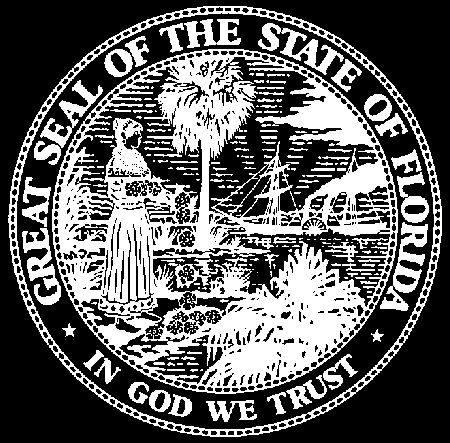FLORIDA DEPARTMENT OF EDUCATION
Request for Application
Bureau / Office
Bureau of Student Assistance/Title I Programs and Academic Intervention Services
Project Title
Title VI, Part B, Subpart 2, Rural and Low-Income School Program
Specific Funding Authority (ies)
CFDA#84.358, P.L. 107 – 110, No Child Left Behind Act of 2001, Title VI, Part B, Subpart 2
Funding Purpose
The purpose of this program is to meet the unique needs of rural and low-income districts by providing
resources and flexibility to supplement selected NCLB priorities. Challenges faced by these districts often
include the lack of personnel and resources needed to compete effectively for Federal competitive grants and
formula grant allocations in amounts too small to be effective in meeting their intended purpose.
Support for Reading Initiative:
Each applicant will describe how, through the implementation of program activities, the reading needs of
Florida students will be addressed, and support and supplement initiatives which may include “Just Read,
Florida!”, “Reading First” and “Just Read, Families!”
Type of Award
Discretionary
Total Funding Amount
$3,225,675 (preliminary)
Budget Period
July 1, 2005 – June 30, 2006
Performance Period
July 1, 2005 – June 30, 2006
Target Population
Target populations include Florida K-12 students, educators, administrators, staff, and parents in rural school
districts
1
?
Eligible Applicant(s)
Eligible Local Educational Agencies (LEAs) must satisfy the following criteria:
•
?
Meet the federal definition of “rural,” and
•
?
May not be eligible for Title VI, Part B, Subpart 1, the Small, Rural School Achievement Program.
Application Due Date
Projects will be effective on the date received or July 1, 2005, whichever is later, and will remain in effect
through June 30, 2006; however, applications should be submitted by June 30, 2006.
Contacts:
•
?
Roger L. Henry, Title VI, Part B, Subpart 2
Email: Roger.Henry@fldoe.org; Phone: (850) 245-9943/Fax: (850) 245-0683
•
?
Kynder Crossner, Operations Management Consultant
Email: Kynder.Crosser@fldoe.org, Phone: (850) 245-0722/Fax: (850) 245-0737
Assurances
The Department of Education has developed and implemented a document entitled, General Terms,
Assurances, and Conditions for Participation in Federal and State Programs, to comply with:
•
?
34 CFR 76.301 of the Education Department General Administration Regulations (EDGAR) which
requires local educational agencies to submit a common assurance for participation in federal
programs funded by the U.S. Department of Education;
•
?
Applicable regulations of other Federal agencies; and
•
?
State regulations and laws pertaining to the expenditure of state funds.
In order to receive funding, applicants must have on file with the Department of Education, Office of the
Comptroller, a signed statement by the agency head certifying applicant adherence to these General
Assurances for Participation in State or Federal Programs. The complete text may be found at
http://www.firn.edu/doe/comptroller/gbook.htm
School Districts, Community Colleges, Universities, and State Agencies
The certification of adherence filed with the Department of Education Comptroller’s Office shall remain
in effect indefinitely unless a change occurs in federal or state law, or there are other changes in
circumstances affecting a term, assurance, or condition; and does not need to be resubmitted with this
application.
General Education Provisions Act
In accordance with the requirements of Section 427 of the General Education Provisions Act (GEPA)
Public Law 103-382, each applicant must include a description of the steps the applicant proposes to take
to ensure equitable access to, and participation in, its program for students, teachers, and other program
beneficiaries with special needs. For details, refer to URL:
http://
www.ed.gov/fund/grant/apply/appforms/gepa427.pdf
2
?
Project Design
The written narrative section of the application must clearly describe the services or activities to be provided.
This description should include objectives, target population(s), and how the program objectives address
Florida’s Strategic Imperatives (see State Requirements), reading goals, and individual school district needs.
The applicant should clearly describe performance benchmarks for projects; provide specific timelines for
completion and what evidence will be provided to demonstrate the activity has been completed.
Federal Requirements
NCLB legislation provides for districts that receive Rural and Low-Income School (RLIS) Program funds for
three years and make adequate yearly progress (AYP) and for those RLIS districts that have not received funds
for three years to use funds for the following:
•
?
Teacher recruitment and retention, including the use of signing bonuses and other incentives;
•
?
Teacher professional development, including programs that train teachers to utilize technology to
improve teaching and to train special needs teachers;
•
?
Educational technology, including software and hardware, as described in Title II, Part D of NCLB;
•
?
Parental involvement activities;
•
?
Activities authorized under the Safe and Drug-Free Schools program under Title IV, Part A of
NCLB;
•
?
Activities authorized under Title I, Part A (Improving Basic Programs Operated by Local
Educational Agencies);
•
?
Activities authorized under Title III (Language Instruction for Limited English Proficient and
Immigrant Students).
Determination Regarding Continuing Participation
[Title VI, Part B, Subpart 2, Section 6224(e)]
After the third year that a local educational agency (LEA) receives funds under the Rural and Low-Income
School Program, a determination shall be made whether it has achieved Adequate Yearly Progress (AYP). If
the LEA has made AYP, it may use program funds for the above listed activities.
If, after the third year, the
district has not achieved AYP, it may continue to receive the grant only if used in accordance with Title I,
Part A, Section 1116 of NCLB
Section 1116 of Title I, Part A (NCLB) states that Title I schools, after the second consecutive year of not
achieving AYP are identified as schools in need of improvement and must take specific actions to assess and
advance academic achievement. These steps and ultimate consequences are as follows:
•
?
During the first year of school improvement, affected schools must offer all students a choice option to
transfer to another public school served by the local educational agency, which includes a public charter
school,that has not been identified for school improvement. Transportation would be provided to those
students that choose this option.
•
?
During the second year of school improvement, affected schools must offer a choice option of state
approved supplemental educational services (SES) to eligible students. The state approved SES may
include such activities as tutoring, remediation, and academic intervention. Transfer transportation
would continue to be offered as a choice.
•
?
During the third year of school improvement, affected schools must offer a choice option of state
approved SES to eligible students. Additionally, the Local Educational Agency (LEA) must take
corrective action.
•
?
During the fourth year of school improvement, affected schools must offer a choice optionof stated
approved SES to eligible students, and plan for restructuring in the following year.
State Requirements
3
?
The mission of Florida’s K-20 educational system is to “increase the proficiency of all students within one
seamless, efficient system, by providing them with the opportunity to expand their knowledge and skills
through learning opportunities and research valued by students, parents, and communities, and to maintain an
accountability system that measures student progress toward the following goals:
•
Highest student achievement;
•
Seamless articulation and maximum access;
•
Skilled workforce and economic development;
•
Quality efficient services.”
The 2004-2005 Florida Board of Education Strategic Plan identifies eight “Imperatives” and corresponding
goals for the state’s educational improvement plan that work toward realizing the mission. They are:
9
Strategic Imperative 1:
Increase the Supply of Highly Effective Teachers
Goal:
“Every public classroom is led by a highly effective teacher.”
9
Strategic Imperative 2:
Set, Align and Apply Academic Curricular and Testing Standards
Goal:
“Every student progresses and advances to the next educational level based on proficiency.”
9
Strategic Imperative 3:
Improve Student Rates of Learning
Goal:
“Every student is proficient on grade level in reading, writing, and mathematics.”
9
Strategic Imperative 4:
Improve the Quality of Instructional Leadership
Goal:
“Every educational institution is led by a quality instructional leader.”
9
Strategic Imperative 5:
Increase the Quantity and Improve the Quality of Educational Options
Goal:
“Every student and parent has reasonable access to a choice quality public or private education.”
9
Strategic Imperative 6:
Align Workforce Education Programs with Skill Requirements of the New
Economy
Goal:
Every workforce education program graduate has competencies required to succeed in his or her
field.”
9
Strategic Imperative 7:
Align Financial Resources with Performance
Goal:
The State Board of Education and Board of Governors collaborate to provide world-class higher
education opportunities.”
Reporting Outcomes
Each project recipient will submit a final evaluation to the program manager no later than September 30, 2006.
The evaluation will include an account of the activities and/or services provided, the populations served, and an
assessment of progress the district has made in meeting the four goals for the Florida Rural Low-Income
Schools Program as described in Florida’s June 2002 Consolidated State Application. Available quantitative
data for each of the grant goals should be included in the final evaluation. An evaluation format will be
provided at the beginning of the school year.
Dissemination/Marketing
Applicants should provide an account of methods/strategies they will use to disseminate project information and
results to the stakeholders (i.e. students, parents, educators, staff, and administrators).
4
?
Funding Method
Federal Cash Advance – Federal cash advances will be made by state warrant or electronic funds
transfer (EFT) to recipients for disbursement. Requests for federal cash advance must be made on the
Electronic Federal Cash Advance Request System, for federally funded projects. If at times it is
determined that disbursements are going to exceed the amount of cash on hand plus cash in transit, an
on-line amendment can be made prior to the due date of the next Federal Cash Advance distribution on
the Electronic Federal Cash Advance Request System.
Federal cash advance projects require monthly expenditure reporting to the DOE Comptroller’s Office by the
20
th
of each month for the preceding month’s disbursements (utilizing the On-Line Disbursement Reporting
System). Additional guidance concerning fiscal reporting, application amendment procedures and project
administration can be found in the DOE GREEN BOOK (http://www.firn.edu/doe/comptroller/gbook.htm).
Official DOE 200 project award notification forms establish terms, conditions, and reporting dates for
projects issued by FLDOE. The use of grant funds for administration and overhead (including indirect costs)
may total not more than five percent (5%) of a project award in this program. Inclusion of indirect costs in
the proposed budget is optional, but only school districts that have established an approved rate may request
funds to recover indirect costs. Guidance concerning indirect cost proposals and associated rates (applicable
to federal program administration) may be obtained from the DOE Comptroller’s Office
(http://www.firn.edu/doe/comptroller/).
FISCAL REQUIREMENTS
•
?
Based on federal projections, approximately $3,299,250 is anticipated for distribution to eligible school
districts. Attached is a district allocation table indicating preliminary distributions.
•
?
Funds made available for Rural and Low-Income School Program activities shall supplement and not
supplant other federal, state, or local funds.
•
?
Allowable expenditures: (see Federal and State Requirements for examples of allowable activities).
•
?
Non-allowable expenditures include capital improvements, plaques, entertainment, food/refreshments,
and decorative/award items.
•
?
Districts that have not achieved Adequate Yearly Progress (AYP) after three years of receiving funds
under this program may continue to receive such funds only if they are utilized to carry out the
requirements of NCLB, Title I, Part A, Subpart I, Sec. 1116 “Academic Assessment and Local
Educational Agency and School Improvement.”
5
?
Conditions for Acceptance
The requirements listed below must be met:
1)
Application must include required forms:
a.
DOE 100A Application Forms (with original signature);
b.
DOE 101-Budget Narrative
2)
The required form has original signature by an authorized entity;
3)
Submit one original and two copies of the application (NOTE: No faxed copies will be accepted);
4)
Application must be submitted to:
Bureau of Grants Management
Florida Department of Education
325 W. Gaines Street, Room 344
Tallahassee, Florida 32399-0400
NOTE: Applications signed by officials other than the appropriate agency head identified above must
have a letter signed by the agency head, or documentation citing action of the governing body delegating
authority to the person to sign on behalf of said official. Attach the letter or documentation to the DOE
100A when the application is submitted
.
Attachments
Allocation Schedule
DOE 100A
Project Application
DOE 101
6
?
2006-2007 Title VI, Part B, Subpart 2 - Rural and Low-Income School Program
Preliminary Allocations Schedule
Agency
#
Agency Name
Allocation
Amount
Reimb.
Options
07
Calhoun 66,313
C
12
Columbia
293,342 C
14
DeSoto
153,602 C
15
Dixie
?
64,705 C
19
Franklin
40,502 C
24
Hamilton
58,409 C
25
Hardee
158,354 C
26
Hendry
238,917
C
28
Highlands
379,186
C
30
Holmes
101,630
C
34
Lafayette
31,817
C
38
Levy
186,787
C
40
Madison
95,862
C
47
Okeechobee
217,652
C
54
Putnam
357,258
C
60
Sumter
206,820
C
61
Suwannee
173,821
C
62
Taylor
103,223
C
66
Walton
193,059
C
67
Washington
104,417
C
3,225,675
Reimbursement Options
Key:
C
?
Federal
Cash
Advance
Q Advance
Payment
S
?
Quarterly
Advance
to Public Entity
R
?
Reimbursement
of
Expenditure
P Reimbursement
with Performance
Back to top
TOTAL
Allocation Schedule
Revised 03/2005
7
FLORIDA DEPARTMENT OF EDUCATION
Project Application
TAPS Number
07A090
Please return to:
Florida Department of Education
Bureau of Grants Management
Room 344 Turlington Building
325 West Gaines Street
Tallahassee, Florida 32399-0400
Telephone: (850) 245-0497
Suncom: 205-0497
A
)
Program Name:
Title VI, Part B, Subpart 2
Rural and Low-Income School Program
2006 – 2007
DOE USE ONLY
Date Received
B) Name and Address of Eligible Applicant:
Project Number (DOE Assigned)
C
)
Total Funds Requested:
$
DOE USE ONLY
Total Approved Project:
$
D
)
Applicant Contact Information
Contact Name:
Mailing Address:
Telephone Number:
SunCom Number:
Fax Number:
E-mail Address:
CERTIFICATION
I, ______________________________________________, (
Please Type Name)
do hereby certify that all facts,
figures, and representations made in this application are true, correct, and consistent with the statement of general
assurances and specific programmatic assurances for this project. Furthermore, all applicable statutes, regulations, and
procedures; administrative and programmatic requirements; and procedures for fiscal control and maintenance of
records will be implemented to ensure proper accountability for the expenditure of funds on this project. All records
necessary to substantiate these requirements will be available for review by appropriate state and federal staff. I further
certify that all expenditures will be obligated on or after the effective date and prior to the termination date of the
project. Disbursements will be reported only as appropriate to this project, and will not be used for matching funds on
this or any special project, where prohibited.
Further, I understand that it is the responsibility of the agency head to obtain from its governing body the authorization
for the submission of this application.
E)
Signature of Agency Head
________________________________________________
Page 8
John L. Winn, Commissioner
Instructions for Completion of DOE 100A
A.
?
If not pre-printed, enter name of the program for which funds are requested.
B.
?
Enter name and mailing address of eligible applicant. The applicant is the public or non-public
entity receiving funds to carry out the purpose of the project.
C.
?
Enter the total amount of funds requested for this project.
D.
?
Enter requested information for the applicant’s contact person. This is the person responsible for
responding to all questions regarding information included in this application.
E.
?
The original signature of the appropriate agency head is required.
The agency head is the
school district superintendent, university or community college president, state agency
commissioner or secretary, or the president/chairman of the Board for other eligible applicants.
•
?
Note:
Applications signed by officials other than the appropriate agency head identified above
must have a letter signed by the agency head, or documentation citing action of the governing body
delegating authority to the person to sign on behalf of said official. Attach the letter or
documentation to the DOE 100A when the application is submitted.
Page 9
John L. Winn, Commissioner
Rural and Low-Income School Program
2006 – 2007 Project Application
PART 1:
For the
June 2002 Consolidated State Application
, the Florida Department of Education (FDOE) selected two
goals on which the RLIS program would be evaluated: (1) increased student academic achievement and (2)
increased graduation rates. Four objectives related to adequate yearly progress (AYP) were established to
measure growth toward these goals. These AYP related goals/objectives are listed below:
1.
?
Increase the proportion of high school students who earn a standard diploma to 75% by FY 2007 (2007-
08);
2.
?
Increase the proportion of fourth-grade students who score at or above the FCAT reading standard for
promotion (Level 2) to 90% by FY 2007 (2007-08);
3.
?
Increase the proportion of all students scoring Level 3 or higher in FCAT reading and mathematics and
Level 4 or higher in FCAT writing by a third by FY 2007(2007-08); and
4.
?
While achieving parts 1 and 2 of this objective cut the average gap between minority and non-minority
students’ FCAT reading scores in half by FY 2007 (2007-08).
Florida districts participating in the RLIS program must use their allocation to fund strategies that support
Targeted Objectives which are annual benchmarks for measuring progress toward accomplishing these four
long-term AYP related objectives.
Section A
If after the third year that a local educational agency (LEA) receives funds under the Rural and Low-Income
School Program (RLIS), it
has made adequately yearly progress
(AYP), the applicant should complete Part 1,
Section A and PART 2 of this application. (Applicants that have not received Rural and Low-Income School
grants for three years should also complete PART 1, Section A and PART 2)
Check below all the activities that your district will use as strategies to support any of the objectives that are
identified in PART 2:
_____
?
Teacher recruitment and retention, including the use of signing bonuses and other financial
incentives;
_____
?
Teacher professional development, including programs to train teachers to utilize technology to
improve teaching and to train special needs teachers;
_____
?
Educational technology, including software and hardware as described in Part D of Title II;
_____
?
Parental involvement activities;
_____
?
Activities authorized under the Safe and Drug-Free Schools Program under Part A of Title IV;
_____
?
Activities authorized under Part A of Title I;
_____
?
Activities authorized under Title III.
Page 10
John L. Winn, Commissioner
Section B
If after the third year that a local educational agency (LEA) receives funds under the Rural and Low-Income
School Program (RLIS) and it
has not made adequately yearly progress
(AYP), it may continue to participate
in the program only if it uses its allocation to fund activities found in NCLB, Title I, Part A, Section 1116.
[NCLB, Title VI, Part B, Subpart 2, Section 6224(e)]. Under this section, school districts are responsible
generally to assist their schools to improve and to make adequate yearly progress.
Applicants in this category should complete PART 1, Section B. and PART 2 of this application.
Review NCLB, Title I, Part A, Section 1116, select all the activities that your district will use as strategies to
support any of the objectives that are identified in PART 2, and list the selected activities below.
Page 11
John L. Winn, Commissioner
Rural and Low-Income School Program
2006 – 2007 Project Application
PART 2:
All applicants must address each of the following:
1. Decide the programmatic focus for this school year. Address the two RLIS Program goals found in the
2002 Consolidated State Application
for this school year: (a) develop Targeted Objectives for each of the
four objectives found in the
2002 Consolidated State Application
(For assistance in addressing SMART
objectives and strategies visit the Florida Department of Education’s Bureau of School Improvement
website at http://www.bsi.fsu.edu.) and (b)identify which strategies will be used to help accomplish each
Targeted Objective selected.
Goal 1:
Increase student academic achievement
Objective 1. Increase the proportion of fourth-grade students who score at or above the FCAT reading
standard for promotion (Level 2) to 90% by FY 2007 (2007-08).
Response:
2006-07 Targeted Objective(s):
Strategy(ies):
Objective 2. Increase the proportion of all students scoring Level 3 or higher in FCAT reading and
?
mathematics and Level 4 or higher in FCAT writing by a third by FY 2007(2007-08).
?
Response:
?
2006-07 Targeted Objective(s):
?
Strategy(ies):
?
Objective .3. While achieving parts 1 and 2 of this objective cut the average gap between minority and non-
?
minority students’ FCAT reading scores in half by FY 2007 (2007-08).
?
Response:
?
2006-07 Targeted Objectives:
?
Strategy(ies):
?
Goal 2:
Increase the percent of students graduating with a standard diploma.
?
Objective: Increase the proportion of high school students who earn a standard diploma to 75% by FY 2007
?
(2007-08).
?
Response:
?
2006-07 Targeted Objective(s):
?
Strategy (ies):
?
Page 12
John L. Winn, Commissioner
2. Identify any additional goals for this school year that the district wishes to pursue. (Remember districts that
made AYP may select only those goals that can be supported by activities on the list in Section A while those
districts not making AYP must select only those goals that can be supported by activities found in Section
1116.) Specify the population that is targeted by any additional goals.
Response:
Goal(s):
Objective(s):
Strategy
(ies):
3. Describe the needs assessment process used to determine (a) the 2006-07 Targeted Objectives selected for the
four RLIS Program goals and (b) additional goals, if any.
Response:
(a)
(b)
4. Describe how the program will be evaluated.
Response:
5. Identify which Strategic Imperative(s) is supported with project strategies.
Response:
6. Identify how elements of such initiatives as “Just Read, Florida”, “Reading First”, and “Just Read, Family”
will be strategically used to accomplish the objectives for RLIS Goals, 2, 3, and 4.
Response:
Page 13
John L. Winn, Commissioner
A)
Name of Eligible Recipient:
TAPS Number
B)
07A090
Project Number:
(DOE USE ONLY)
FLORIDA DEPARTMENT OF EDUCATION
Budget Narrative Form
(1)
FUNCTION
(2)
OBJECT
(3)
ACCOUNT TITLE AND NARRATIVE
(4)
FTE
POSITION
(5)
AMOUNT
C) TOTAL
$
Page 14
John L. Winn, Commissioner
Instructions
?
Budget Narrative Form
?
This form should be completed based on the instructions outlined below, unless instructed otherwise in the Request for Proposal (RFP) or Request
for Application (RFA).
A.
Enter Name of Eligible Recipient.
B
.
(DOE USE ONLY)
COLUMN 1
FUNCTION:
SCHOOL DISTRICTS ONLY:
Use the four digit function codes as required in the Financial and Program Cost Accounting and Reporting for Florida
Schools Manual.
Column 2
OBJECT:
SCHOOL DISTRICTS:
Use the three digit object codes as required in the Financial and Program Cost Accounting and Reporting for Florida
Schools Manual.
COMMUNITY COLLEGES:
Use the first three digits of the object codes listed in the Accounting Manual for Florida’s Public Community Colleges.
UNIVERSITIES AND STATE AGENCIES:
Use the first three digits of the object codes listed in the Florida Accounting Information Resource Manual.
OTHER AGENCIES:
Use the object codes as required in the agency’s expenditure chart of accounts.
COLUMN 3
-
ALL APPLICANTS:
ACCOUNT TITLE:
Use the account title that applies to the object code listed in accordance with the
agency's accounting system.
NARRATIVE:
Provide a detailed narrative for each object code listed. For example:
•
?
SALARIES
- describe the type(s) of positions requested. Use a separate line to describe each type of position.
•
?
OTHER PERSONAL SERVICES
– describe the type of service(s) and an estimated number of hours for each type of position. OPS is
defined as compensation paid to persons, including substitute teachers not under contract, who are employed to provide
temporary services to the program.
•
?
PROFESSIONAL/TECHNICAL SERVICES
- describe services rendered by personnel, other than agency personnel employees, who
provide specialized skills and knowledge.
•
?
CONTRACTUAL SERVICES AND/OR INTER-AGENCY AGREEMENTS
- provide the agency name and description of the service(s) to be
rendered.
•
?
TRAVEL
- provide a description of each type of travel to be supported with project funds, such as conference(s), in district or out of
district, and out of state. Do not list individual names. List individual position(s) when travel funds are being requested to perform
necessary activities.
•
?
CAPITAL OUTLAY
- provide the type of items/equipment to be purchased with project funds.
•
?
INDIRECT COST
- provide the percentage rate being used. Use the current approved rate. (Reference the DOE Green Book for
additional guidance regarding indirect cost.)
COLUMN 4 – MUST BE COMPLETED FOR ALL SALARIES AND OTHER PERSONAL SERVICES.
FTE
- Indicate the Full Time Equivalent (FTE based on the standard workweek for the type of position) number of positions to be
funded. Determine FTE by dividing the standard number of weekly hours (e.g., 35 hours) for the type of position (e.g., teacher aide)
into the actual work hours to be funded by the project.
COLUMN 5
AMOUNT -
Provide the budget amount requested for each object code.
C.
?
TOTAL
-
Provide the total for Column (4) on the last page
.
Must be the sa
me amount as requested on the DOE-100A or B.
Page 15
John L. Winn, Commissioner









